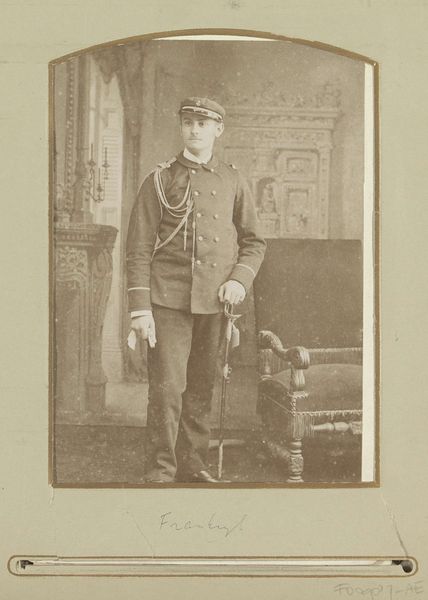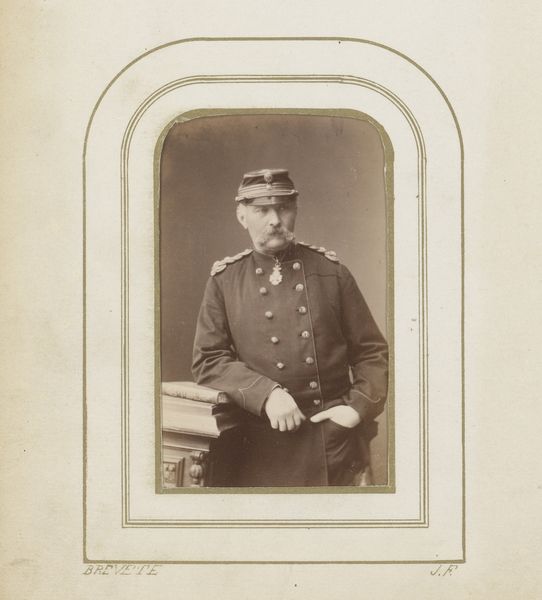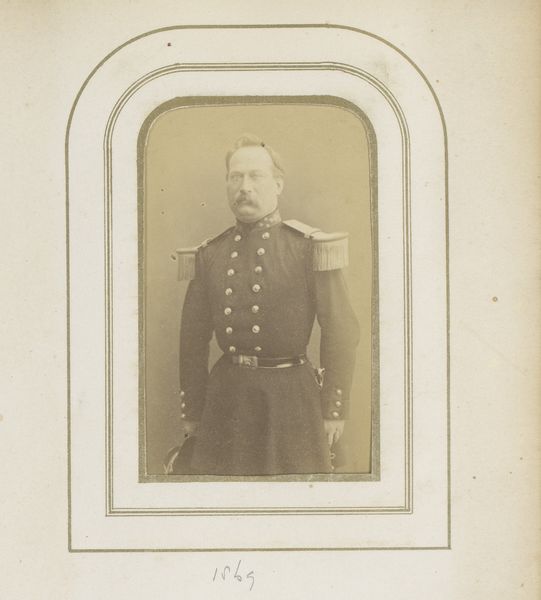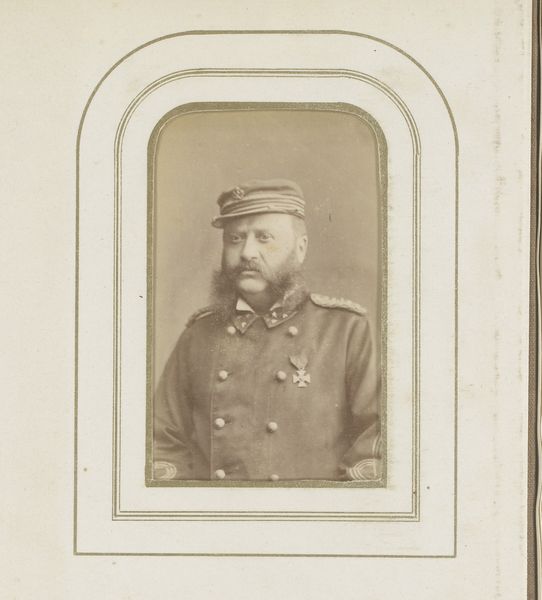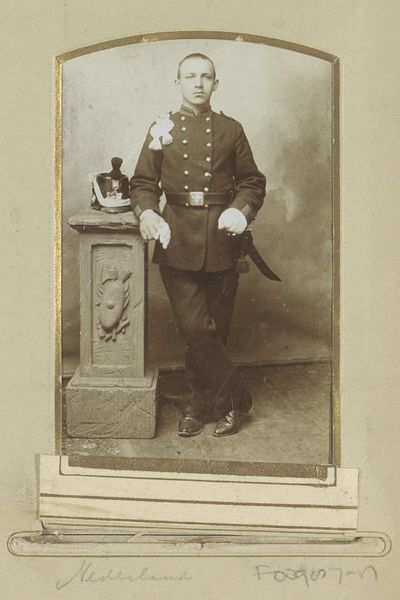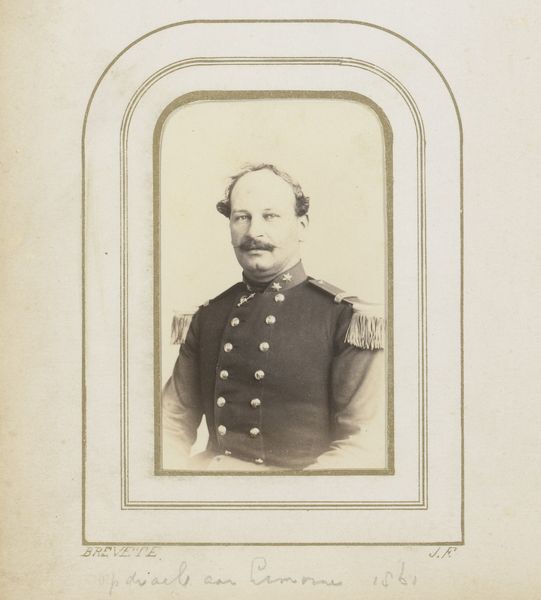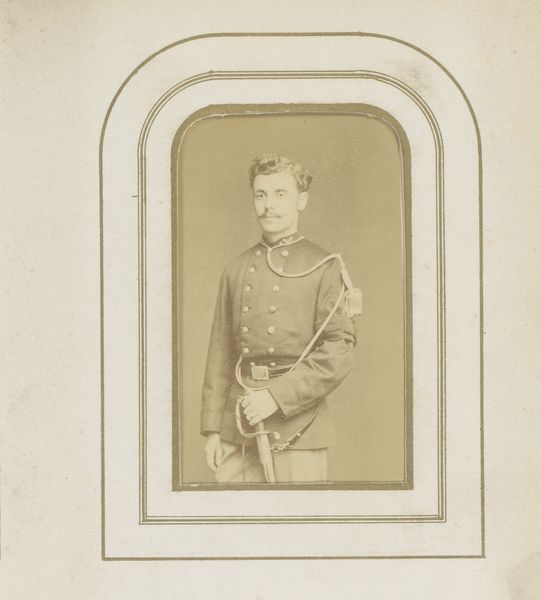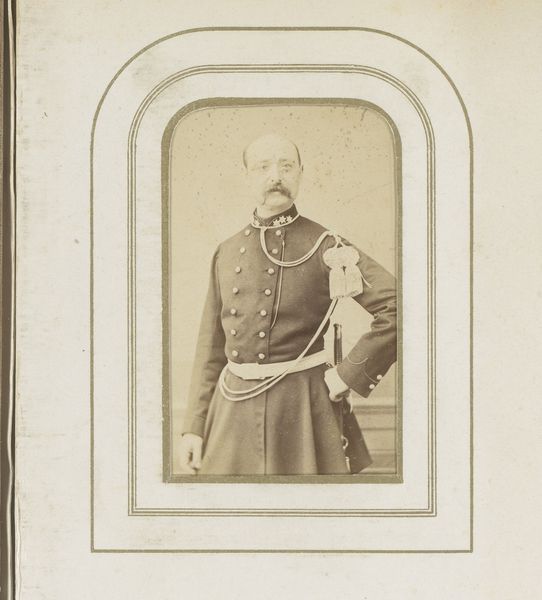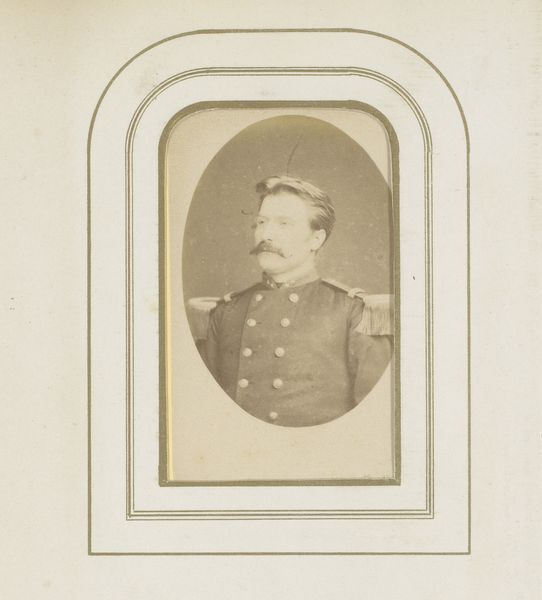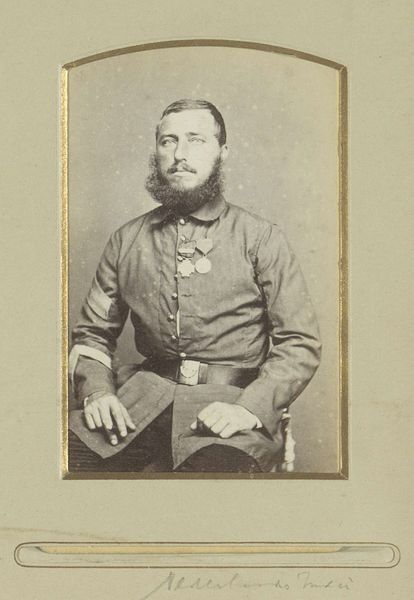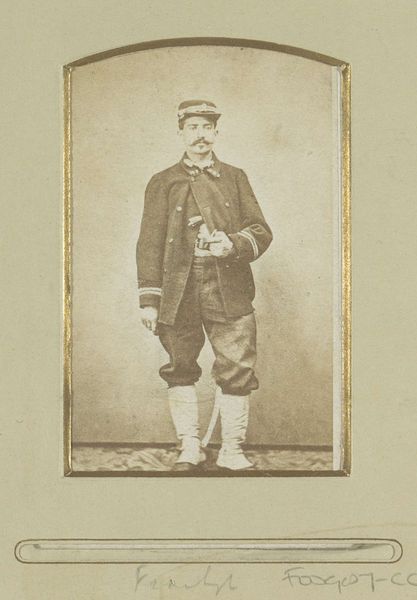
Portret van een (vermoedelijk) Franse militair, staand met een sabel in de hand c. 1860 - 1890
0:00
0:00
williamguilmard
Rijksmuseum
Dimensions: height 102 mm, width 61 mm
Copyright: Rijks Museum: Open Domain
This photograph of a presumed French military man, holding a saber, was made by William Guilmard sometime in the mid-19th century. It's a salt print, an early photographic process where paper is soaked in a salt solution, then coated with silver nitrate. When exposed to light through a negative, the silver reacts, creating the image. The salt print, like other early photography, was revolutionary. Suddenly, images could be reproduced. But it was also labor intensive, requiring careful preparation and expertise. The final print also tends to have a soft, almost dreamy quality, which you can see here. This aesthetic effect arose directly from the process itself; the image particles are embedded within the paper fibers, rather than on the surface. Consider the contrast between this handmade process and the subject: a military man, an agent of industrial warfare. Photography in this period both documented and participated in social change, capturing a moment of intense technological development. It reminds us that even the most seemingly straightforward images are the product of specific materials, techniques, and contexts.
Comments
No comments
Be the first to comment and join the conversation on the ultimate creative platform.
